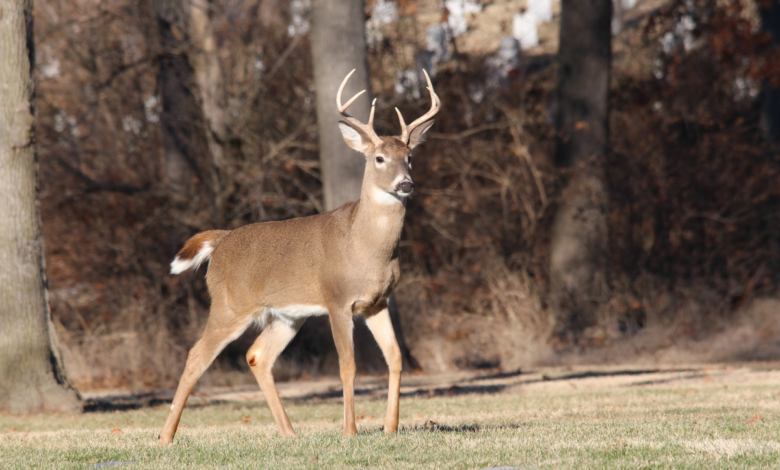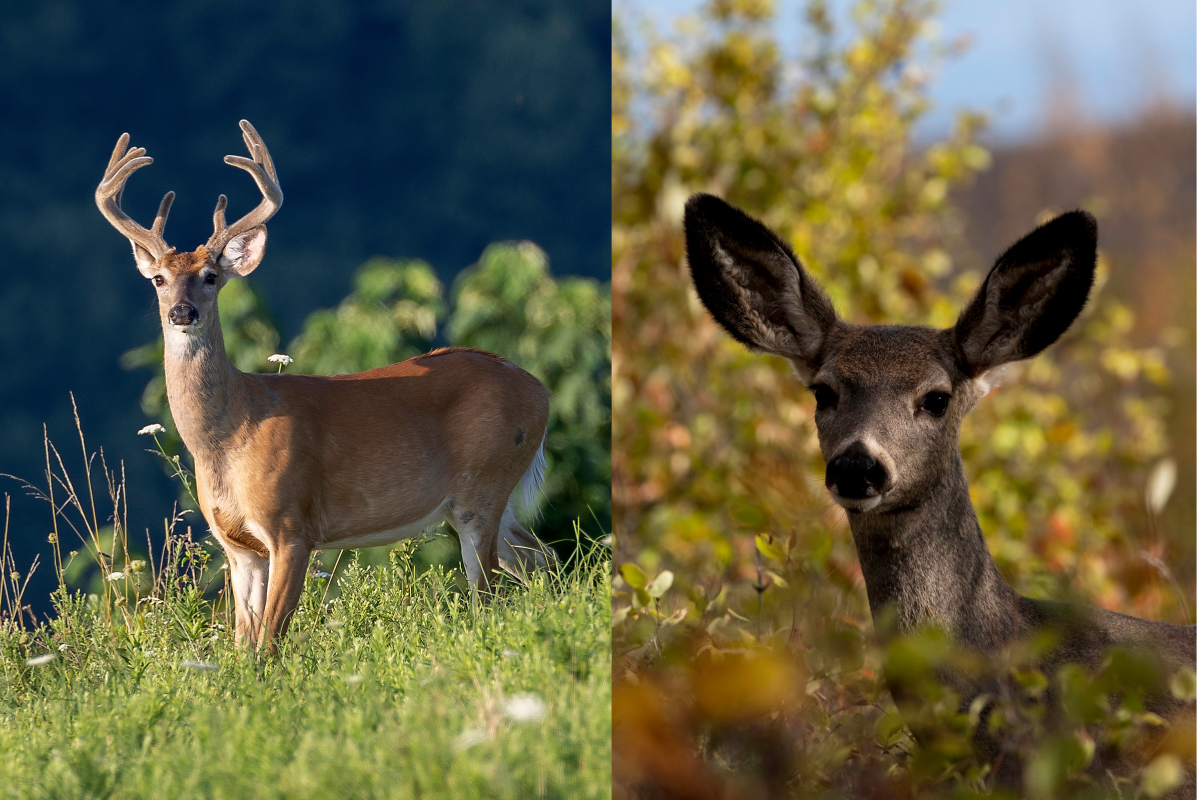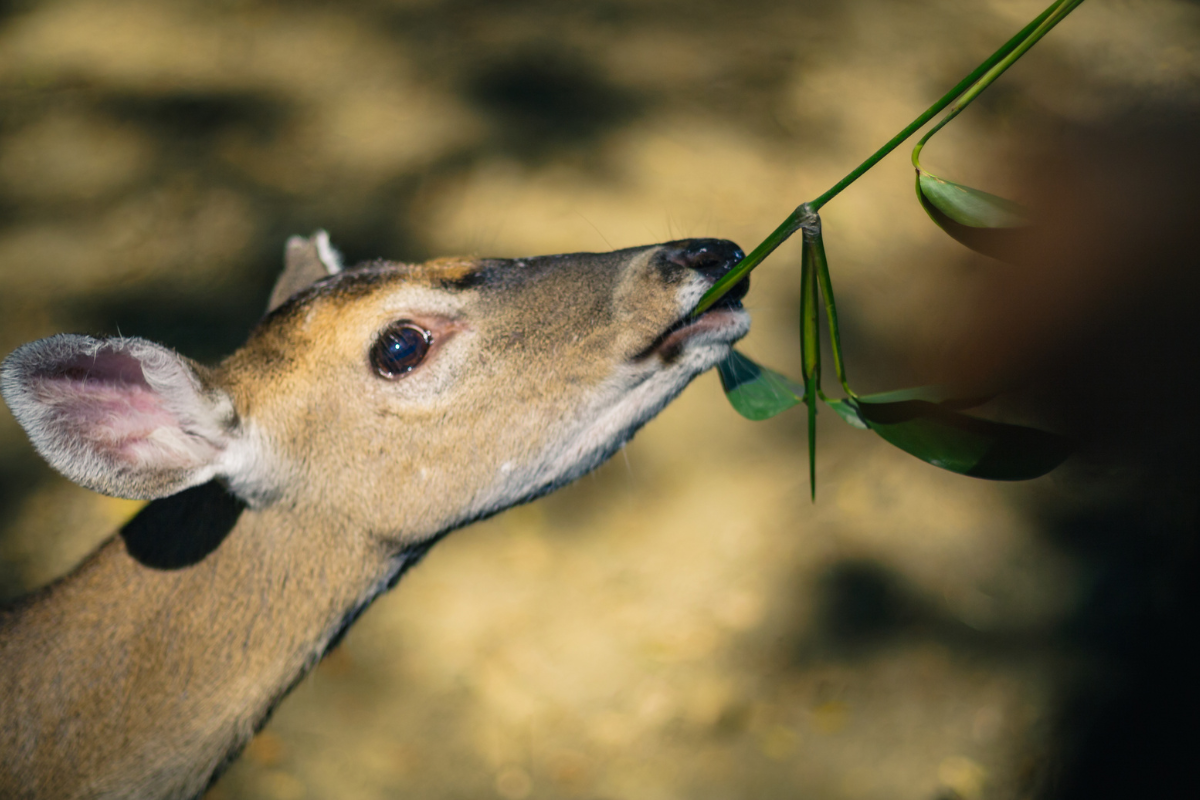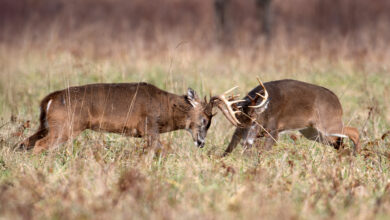Mule Deer vs Whitetail Deer: Understanding and Respecting the Differences

Here is a fact for you: There are around 11 million deer hunters in the US.
…and I can tell you, deer is an obsession for many, especially whitetail.
What about the experience of the hunt and the joys and miseries that we experience for a deer? Perhaps these are the special moments that we crave.
No matter what objectives you might be chasing as a hunter, mule deer vs whitetail deer is a topic that you must have come across.
We all know that the main difference between the two lies in the rumps and the tails. But there are many other differences that you need to learn to become a better hunter.
In this article, we will straighten out a few more facts about the differences between whitetail and mule deer and their behavior patterns.
Habitat and Range Comparison
Since they are incredibly adaptable, whitetails are found in a wide range of habitats. All the states of the U.S.A. have a healthy whitetail population.
You will find them in the swamps of Florida, the woods of Maine, and the mountains of Montana. They can be found in brush fields, prairies, riparian corridors, broadleaf forests, mountains, and farmlands.
Whitetails can withstand temperature variations and feed on 600 different plant species. Considering that they were on the verge of extinction in the late 1800s, it is remarkable how the species has bounced back in the last century.
Mule deer prefer arid, rocky environments and tend to migrate to higher elevations during the summer. In winter, they move back to lower elevations. Their habitats overlap with that of the whitetail in some belts.
Muleys are distributed across the western belt of Northern America across open grasslands, forests, dense brush, and meadows. Generally, they choose locations that offer nutritious plants like perennial forbs and grasses, along with a closeness to cover and water stations.

Differences in Physical Characteristics of Whitetail vs Mule Deer
For untrained eyes, spotting the differences between whitetail and mule deer is difficult. To make things simpler, let us go through the main distinguishing features between the two.
Ears
While whitetails derive their names from their tails, it is the other way around for the mule deer. A mule deer has large ears like a mule and the average ear size of an adult can be between 8 to 190 inches. For whitetails, the ear size is closer to 6 inches.
While both species have dark edges around the ears, the whitetail ears are more rounded and wider at the base. Besides, the whitetail ears also sit higher on the head.
Tails
Taking a closer look at the tail is one of the easiest ways to compare a whitetail vs mule deer. The rump of a whitetail is brown and the white portion is only visible when the deer “flags” or raises its tail. Typically, the tail is longer than that of a mule deer.
Flagging the tail is a typical behavior of the whitetails when they are spooked. Holding the tail aloft is also a sign to alert the others in the group of danger.
In contrast, a muley has a white rump and a white tail with a black tuft at the end. The tail is rope-like and shorter than that of a whitetail.
Body
If you compare two bucks of the same age from the two species, generally the mule deer will have a larger body. But there can be exceptions.
While muleys weigh between 100 and 220 pounds, some of the large bucks can weigh as much as 450 pounds. A whitetail buck can weigh between 90 to 200 pounds. A whitetail and mule deer doe will be lighter in weight.
I find it hard to distinguish between the two in terms of color as they appear mostly similar in all seasons. A side-by-side comparison is hardly possible. Whitetails have a tan or brown coat in summer which turns grayish brown in winter. Muleys have a slightly deeper reddish-brown coat in summer which transitions to brownish-gray. Both types have white on their bellies and the inside of the legs.
One distinctive feature of whitetails is a ring of white fur around their eyes and noses. The fur on the rest of the face is darker. Muleys have a creamy white face with no distinct white patches and the fur turns darker in the forehead area.
Antlers
There are structural differences between the headgear of the two species, that experienced eyes can spot easily. Whitetail antlers consist of a primary beam with tines coming out of it. The brow tines – the first ones nearest the head– are well developed.
The antlers in mule deer have no primary beam and are forked in two different directions. The direction of growth tends to be upward rather than forward. Also, the brow tines are not so well-developed.
Behavior and Social Structure
Reading the body language of a deer allows you to know what the animal might do in the next moment. That way you can be better prepared for your next move.
If you find whitetails with their ears scanning around and heads moving casually up and down, know that they are relaxed. Also, their neck should be relaxed and not tense.
If the deer has turned its eyes in a particular direction and is observing, something has caught his attention. If the tail is half-raised, the rump hair is flared, and the body is tense, the deer is nervous.
This “alarm pose” is one step away from the alarm sign of raising their “white tail” and stomping their foot. These are telltale signs that indicate that the deer can bolt at any moment. In such scenarios, your only option is to stay stone-still and hope that you have not been busted.
The body language of mule deers is similar but they do not “flag” their tail. I have seen them tucking their tail while fleeing. Casual wagging of the tail or a flick of the head are not signs of alarm.
Coming to social structures, mule deers form family groups centered around related does and the offspring. Once the bucks are older than a year they are removed from the group. As winter approaches, multiple families can combine to form larger herds.
In early fall, the bucks spar to create a dominance hierarchy to decide who breeds. However, the bucks do not attempt to form a herd of does for breeding. The mating period for mule deer is between mid to late November.
Now, things are different with whitetails. The basic social unit for whitetails consists of two social groups. One consists of related females, their fawns, and yearlings, and the other is made of bachelor adult bucks. The bucks are polygamous and in the mating season, they split up to mate with the females.
For whitetails, the breeding period lasts longer, between late November and early December. In winter the groups stay together and multiple social groups use the same winter ranges.

Diet and Foraging
The primary food of whitetails is herbaceous plants along with crops, fruits, and grass. In autumn and spring, they feed on acorns, aquatic plants, fungi, duds, and twigs.
During winter, they survive on woody browse like twigs, shrubs, and stems of seedlings. Interestingly, the digestive process of whitetails shifts gears to match the seasonal food availability.
Likewise, mule deer feed on a variety of vegetation, twigs of woody shrubs, and grasses. But unlike the whitetails, they are more selective with their diet and prefer more nutritious plants. They like forbs and also consume berries, nuts, and mushrooms in small quantities. In winter they feed on sagebrush mountain laurel, dewberry, dogwood, and bitterbrush.
Hunting and Conservation
I do not claim to be an authority on deer hunting, but my experiences in the past two decades have taught me a few things. Firstly, when it comes to hunting whitetails, the key is to master the art of scouting. Try to spot the deer trails and movement patterns while scouting.
The next step is to pick the right camo outerwear and find the best spot from where you can keep an eye on the prey. Keep in mind that whitetails have sharp reactions. Choose the right gear for deer hunts and get enough practice to sharpen your skills and increase your kill range.
Lastly, you need to track and retrieve the wounded deer to complete your hunt. I have learned that whitetails are incredibly resilient and can withstand the most grievous wounds. Mastering the art of blood tracking takes time and a lot of patience, but when done, your success rates will surely spike.
For mule deer, spot-and-stalk hunting is a common practice. Hunting mountain bucks above the treeline can be rewarding if you are willing to access remote terrains. The other option is to stalk them at lower elevations over sage flats and wooded hillsides. You can also use calling and decoying tactics, especially during the deer rutting season.
If your scores on the patient meter are super high, you can try still-hunting with a rifle. It is not easy to move slowly over mountain ridges while glassing the deer. But that makes it more challenging and a lot of fun.
Note, that habitat loss due to climate change and predatory activities is a major threat that mule deer are facing. A recent partnership between the Mule Deer Foundation, the U.S. Forest Service, and the Bureau of Land Management is focusing on mule deer conservation efforts. This includes habitat restoration projects across the country.
Whitetail conservation is challenging as there can be negative consequences if their population grows too large. It can lead to crop damage and overgrazing which can impact plant diversity and cause soil erosion. At the same time, maintaining a stable whitetail population is necessary for a stable ecosystem.
Final Thoughts
Hope this helps you have a clear idea about the mule deer vs whitetail issue and how to tell them apart.
Frankly, with deer seasons lasting only for a few weeks in a year, it will take you ages to master the various deer hunting tactics. One way to get better is to steep into the woods during off seasons to spot and observe the deer. Learning the ways of the whitetails and muleys can contribute immensely to improving your success rate as a hunter.
One last tip to help increase your odds. Always stay super quiet while in deer country. They can hear you.



